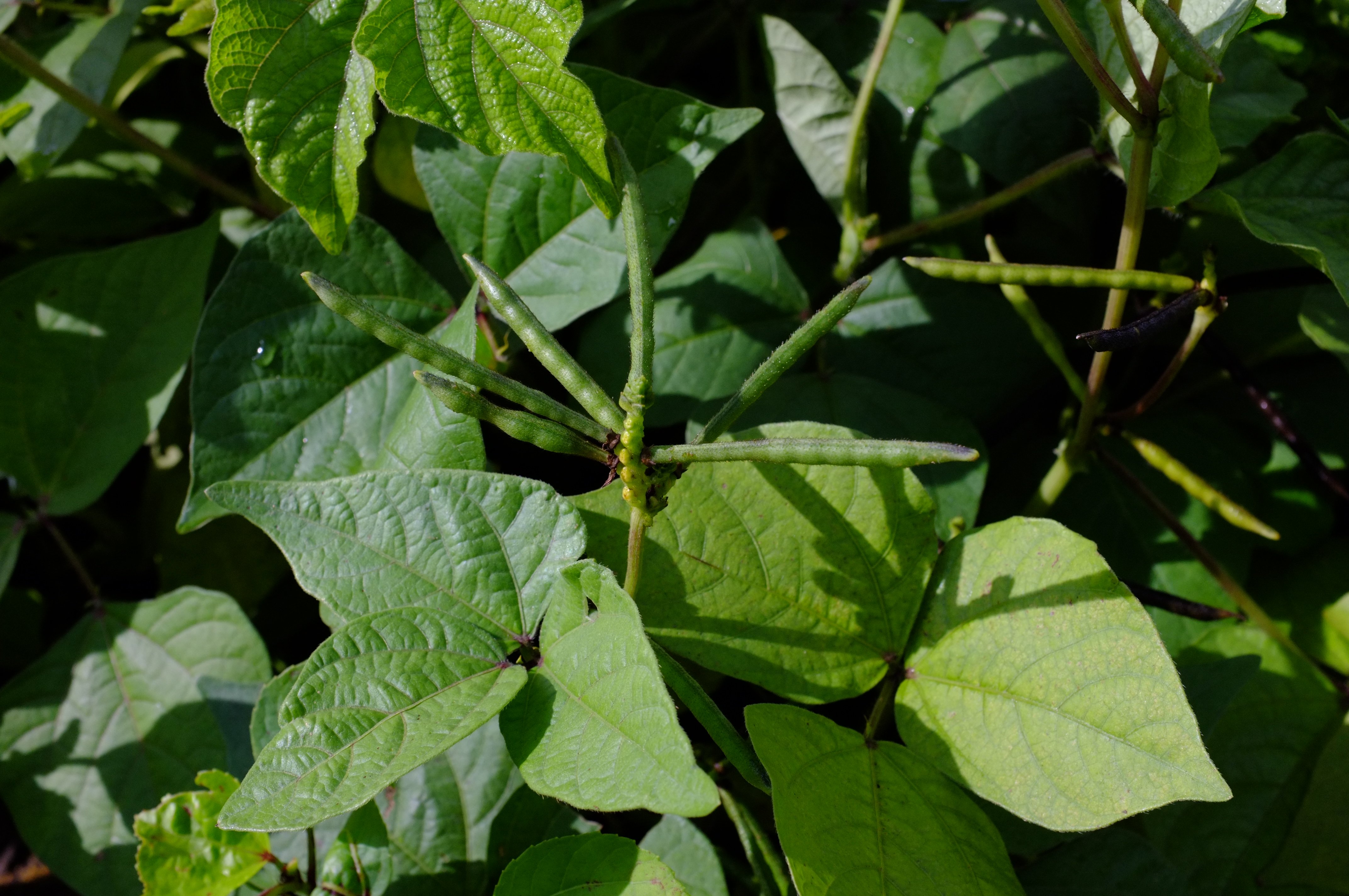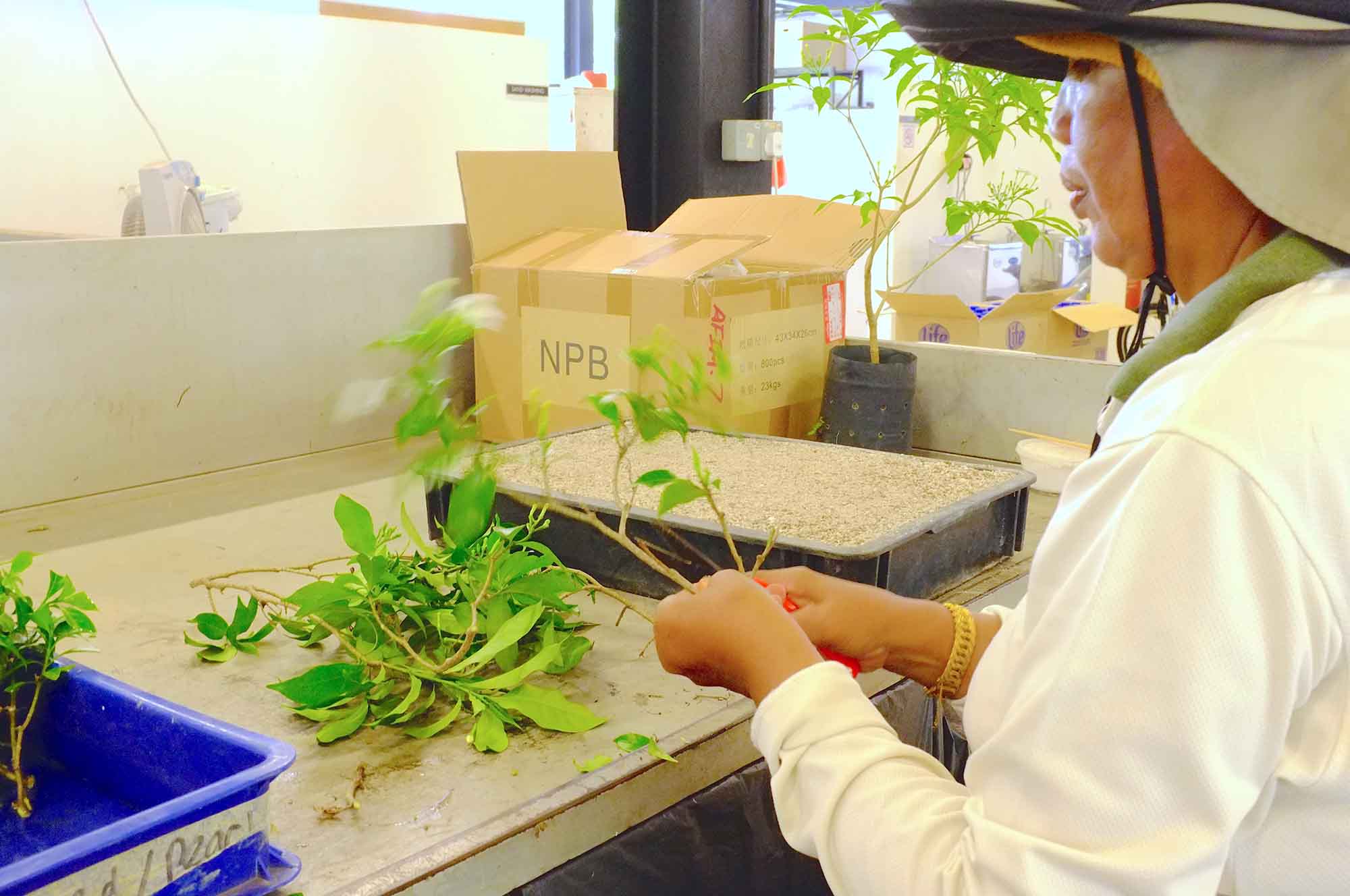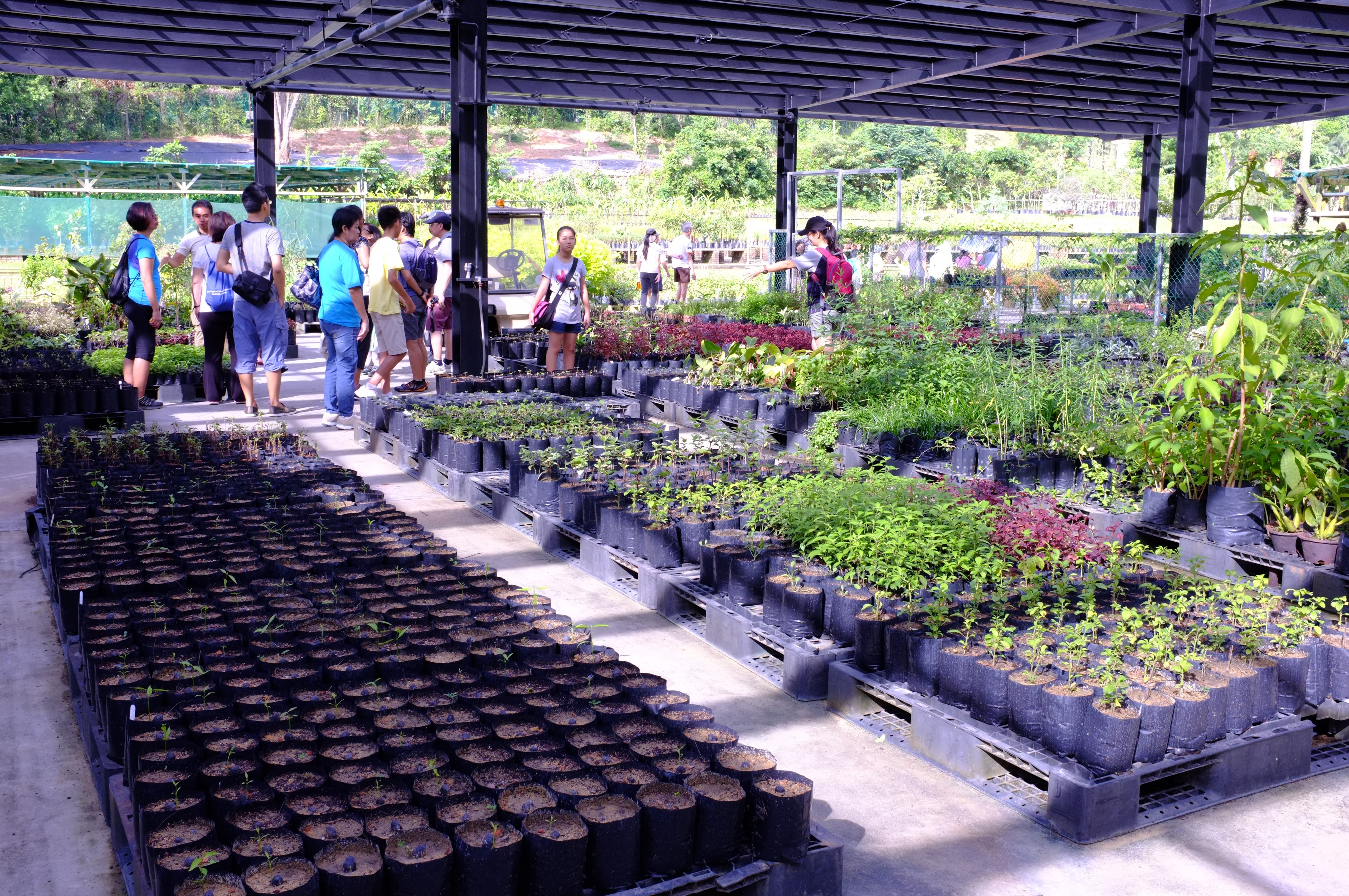On Saturday, NParks (National Parks Board) opened its Pasir Panjang Nursery to the public for the first time, and I went down first thing in the morning with mom in-tow to view their 12 hectare growing space. I loved what I saw.
I especially love its vast expanse of space and plant life, including flowers, vegetables, fruits, ornamentals, trees, and aquatic plants. There were also bees and other pollinating insects flitting about from flower to flower.
The tour seemed to go by quickly, even though it went for an hour and a half. The guide shared lots of interesting details about different plants, and the session was highly interactive, where we got to touch and smell various plants and flowers.
He shared that aquatic plants, including water lilies, sit in this storm water surge canal pictured below, and helps purify water that runs through it. In times of heavy rain, lots of sediment gets washed into the canal.
From here, we visited their propagation area, where plants are soaked in a hormone solution, then placed in sand. The guide explained that unlike soil, there are no nutrients in sand, which also has great drainage properties, making it a good medium to contain propagated plants till it forms roots.
Here’s the potting area.
In this room, propagated plants sit until they put down roots. The humidity of this room is set at 80%. In the second photo, where it says plant salvaging programme, are plants taken from Bukit Brown.
This is the Dry House, where imported plants from drier climates are kept initially.
And here’s the area where plants are hardened off, before it is placed outdoors to fend for itself.
We were then shown some interesting plants, including a legume with velcro properties, and the super spicy Bangladeshi Chilli, the kind which gets more spicy as it sits in your belly.







Here’s one flower all Singaporeans need to know about – Kopsia Singaporensis, a critically endangered plant that favours swamps. There’s at least one tree found in the Central Catchment Nature Reserve.



The premises is neatly grouped up into areas which include the above mentioned edibles section, palms, ground-cover, and native trees, among others.
One tree that I especially like is the Handkerchief Tree. It looks so cute and unique.

If you didn’t manage to visit this time around, stay in touch with NParks’ activities on their Facebook page so you know when they decide to organise another round of tours. The next Gardener’s Day Out falls on 6 December, and NParks will be selling some of their plants there, so make sure you head down if you like affordable plants!































No Comments